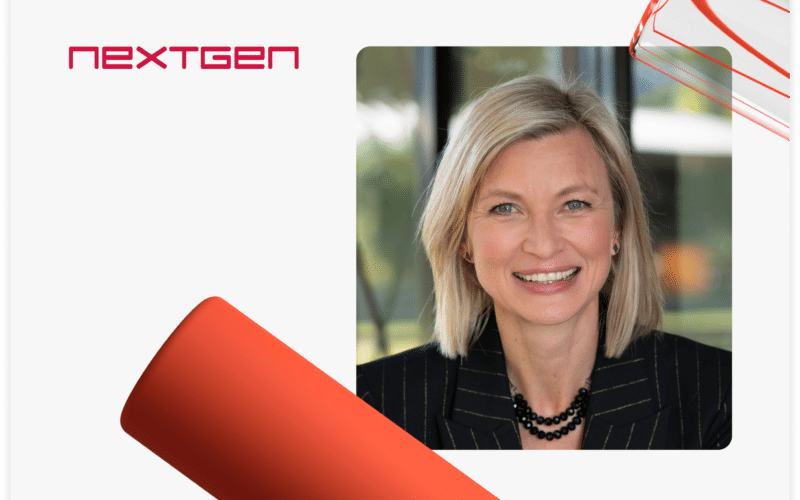Open Banking continues to evolve, and evolution takes time. But for some, the pace of growth could have been faster up until now. After all, many Australians aren’t even familiar with the term Open Banking, and most are still yet to use it.
That said, more and more businesses are getting accredited and launching use cases. But most are still small-scale or Proof of Concept, and we are still waiting to see a big consumer-facing business launch a use case at scale.
We talked to some leading industry figures about what might be holding Open Banking back, what exciting opportunities they see in Open Banking and how their business will engage in Open Banking over the next 12 months. And their answers show there’s still strong hope and support for Open Banking, albeit with a few pieces that still just need to fall into place.
Our interviewees:
- Lindsay O’Sullivan – Chief Operating Officer, Keystart Loans
- Simon Burt – Head of Digital Experience and Innovation, NGM Group
- Rehan D’Almeida – General Manager, Fintech Australia
- Simon Docherty – Chief Customer Officer, Frollo
Balancing risk and effort
Many lenders aren’t using Open Banking yet, and Keystart Loans Chief Operating Officer Lindsay O’Sullivan thinks there are a couple of things at play: perceived risk and effort.
You need people who have the appropriate skills to make it happen
Lindsay O’Sullivan, Keystart Loans
“For some players, I imagine they fear there is a risk of making it easier for other firms to compete,” says O’Sullivan.
But the effort is the largest factor (which comes with its own risk). Engaging with Open Banking takes a lot of work.
“First, you need to get your head around the obligations under the Consumer Data Right regime, and that has been evolving,” says O’Sullivan.
“Second, you need to be clear on the use cases for your firm, which takes time.
“Third, you need people who have the appropriate skills to make it happen; again, it takes time to upskill commercial and technical teams (and legal and compliance teams).
“Fourth, it requires significant investment and needs to be prioritised, alongside a myriad of other initiatives, all competing for finite resources.
“Fifth, for most it involves overcoming technical challenges related to technology or data that may not be easy to resolve quickly,” O’Sullivan said.
Frollo CCO Simon Docherty sees this as a particular issue for smaller businesses.
“All banks have had to make significant investments to comply with Data Holder obligations, and for smaller banks, this has tapped both their resources and their finances,” says Docherty.
But he also points out that we might just need to flip the script and reposition effort as investment. It’s not just about obligation, it’s about return.
Once banks have access to the quality of data available, there are many exciting ways they can use that data to improve systems, processes and customer interactions
Simon Docherty, Frollo
Docherty says “the more exciting opportunity is when banks and other businesses realise the power that Open Banking data can give them across their business.
“It starts with Lending and Money Management but can quickly become about marketing, product development, customer support and operations.
“Once banks have access to the quality of data available, there are many exciting ways they can use that data to improve systems, processes and customer interactions,” Docherty said.
And that opens the doorway to growth.
“The majority of companies are now educated enough about the CDR to see the change and benefits that great data can deliver. Many are taking small steps to ensure they are ready for it when it achieves scale,” says Docherty.
“The really brave companies are diving in, or as I heard it described, they are making the “no regrets” investment, secure in the knowledge that the immediate benefits are there and will continue to grow. It’s not only ‘no regrets’ but also relatively risk-free as an investment in the future of your business, provided you can sustain a medium-term investment horizon,” Docherty said.
Fintech Australia General Manager Rehan D’almeida says the effort can be worth it but requires perseverance.
We need to persevere if we’re to see the CDR realise its full intended impact
Rehan D’almeida, Fintech Australia
“It’s not an easy ask,” says D’almeida.
“Our progress to date with the CDR has come as a result of a lot of dedication, trust and debate between the fintechs, government and key industry players.
“We’re only now starting to see the fruits of our labour, and we need to persevere if we’re to see the CDR realise its full intended impact,” D’almeida said.
Increased market awareness and government support
D’almeida would also like to see government support in the form of an awareness campaign to draw attention to and encourage the broader adoption of CDR technology.
We need to capture and promote stories around the uses of the CDR
Rehan D’almeida, Fintech Australia
“We can’t rely on a ‘build it and they will come’ mentality. This hasn’t worked with prior fintech innovations, and won’t work here,” says D’almeida.
“Many consumers do not understand what the CDR is. Many more will be concerned about how their data is being used, without understanding the strict regulations in place to protect it.”
Key to this is showing Open Banking delivering value.
“We also need to capture and promote stories around the uses of the CDR. As I said, we know it is in the hands of some consumers. Yet we’ve heard little about these early adopters and we know there are exciting use-cases flying under the radar,” D’almeida said.
Docherty agrees the market is important, but suggests the government plays a role in fine-tuning the system to boost customer uptake and business buy-in.
“The usual pattern in fintech is that innovation comes first, customer take-up gets it to scale, and then regulation catches up. Think of Buy Now Pay Later (BNPL) as an example,” says Docherty.
“That innovation typically takes a customer-led approach, which drives scale and adoption with customers and businesses. Regulation then has to work with that to protect and guide the customer.
“With the CDR, regulation was the starting point, driving the innovation. Regulation now has to adapt to become more customer-focused and business-friendly to drive take-up.”
Although he says that’s not a bad thing when putting customer security and transparency at the heart of data management. But it has slowed things down as we wait for regulation to adapt to be more customer-focused.
Waiting on Action Initiation
Action Initiation is on the horizon, and it could be a critical element to galvanizing Open Banking. NGM Group Head of Digital Experience and Innovation Simon Burt says we can look to the UK for assurance.
“In comparison to the UK model and the widespread uptake there in banking, with things like consolidation of other banks’ accounts into your main banking app being quite commonplace, it appears that Action Initiation was the key – taking Open Banking from a read-only proposition, to read and write,” Burt said.
Lending to bring big things
Lending is also expected to be another driver of Open Banking. Docherty says it’s “the biggest opportunity at the moment… hands down.”
“Lending has the scope to deliver significant benefits to customers, whether it’s in mortgages, credit cards, personal loans or commercial finance,” Docherty says.
“Open Banking data can improve the customer experience, reduce the time required to get approved and lift the overall loan approval rates.
“Not only does Open Banking deliver customer benefits in Lending, but there’s a clear and measurable return on investment for businesses using Open Banking data through time saved in processing and better decisions from quality data,” Docherty said.
Burt agrees.
One of the biggest opportunities in Open Banking is using customer data to streamline lending applications
Simon Burt, NGM Group
“One of the biggest opportunities in Open Banking is using customer data to streamline lending applications, helping to pre-populate applications for customers, making it faster and easier for customers to apply, as well as for us as lenders to process those applications,” Burt said.
Waiting for scale
While many market challengers are driving innovation and providing proof points, Docherty says it’s the bigger players that can really push Open Banking forward.
Larger banks’ active use of CDR provides the scale to drive crucial customer adoption and awareness
Simon Docherty, Frollo
“Larger banks most likely have the budget and resources to launch Open Banking use cases and start getting returns on this investment,” says Docherty.
“When larger banks actively lead the charge, it helps other bank CEOs and Boards prioritise CDR-driven projects, knowing they need to remain competitive.
“It’s also clear that larger banks’ active use of CDR provides the scale to drive crucial customer adoption and awareness and that customer adoption will lift the entire ecosystem.”
This article is part of ‘The State of Open Banking 2024’, an industry report by Open Banking provider Frollo. The report provides a pulse check of the Consumer Data Right industry and an overview of exciting new use cases.










